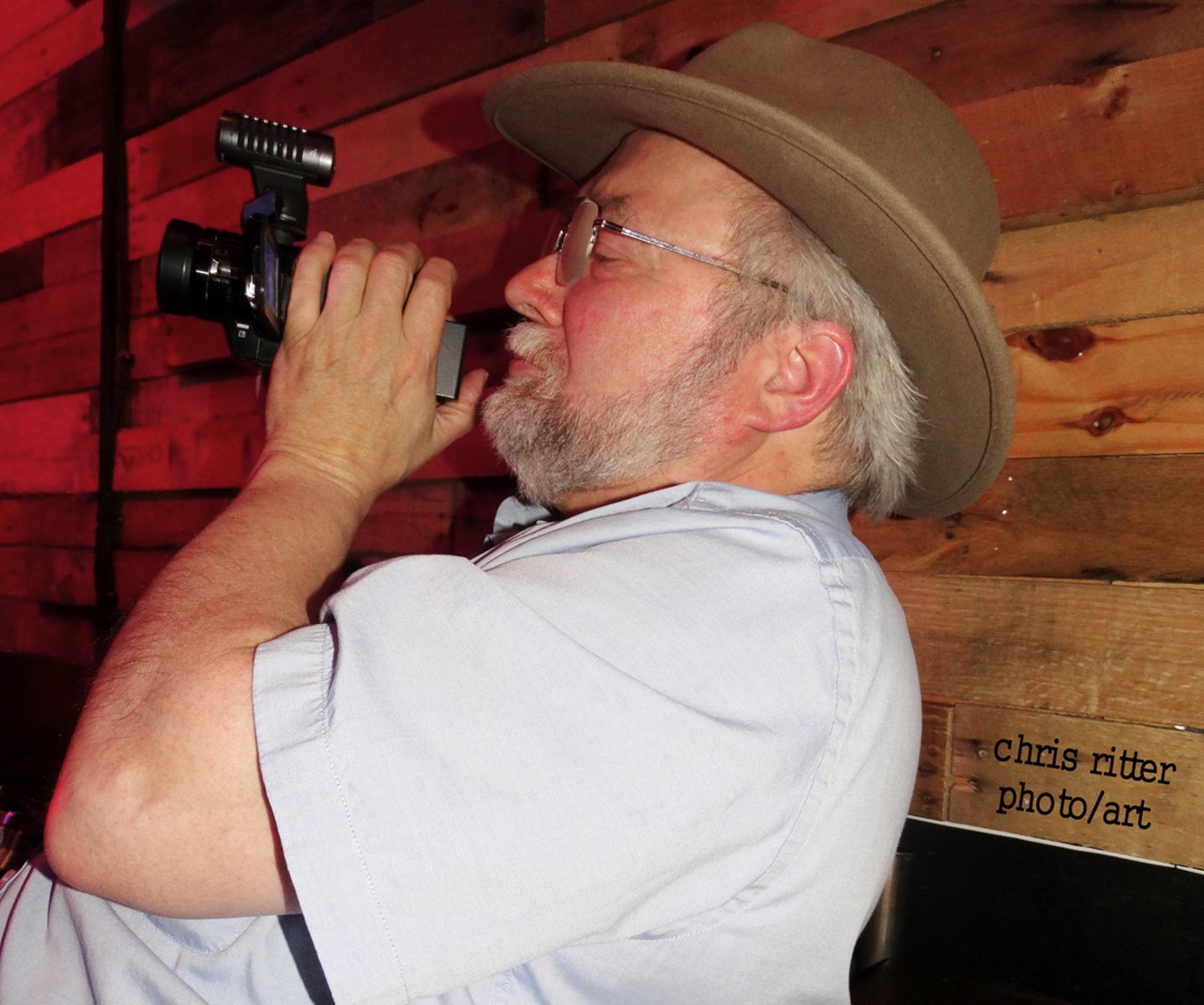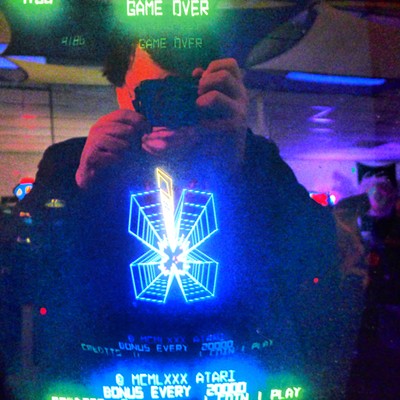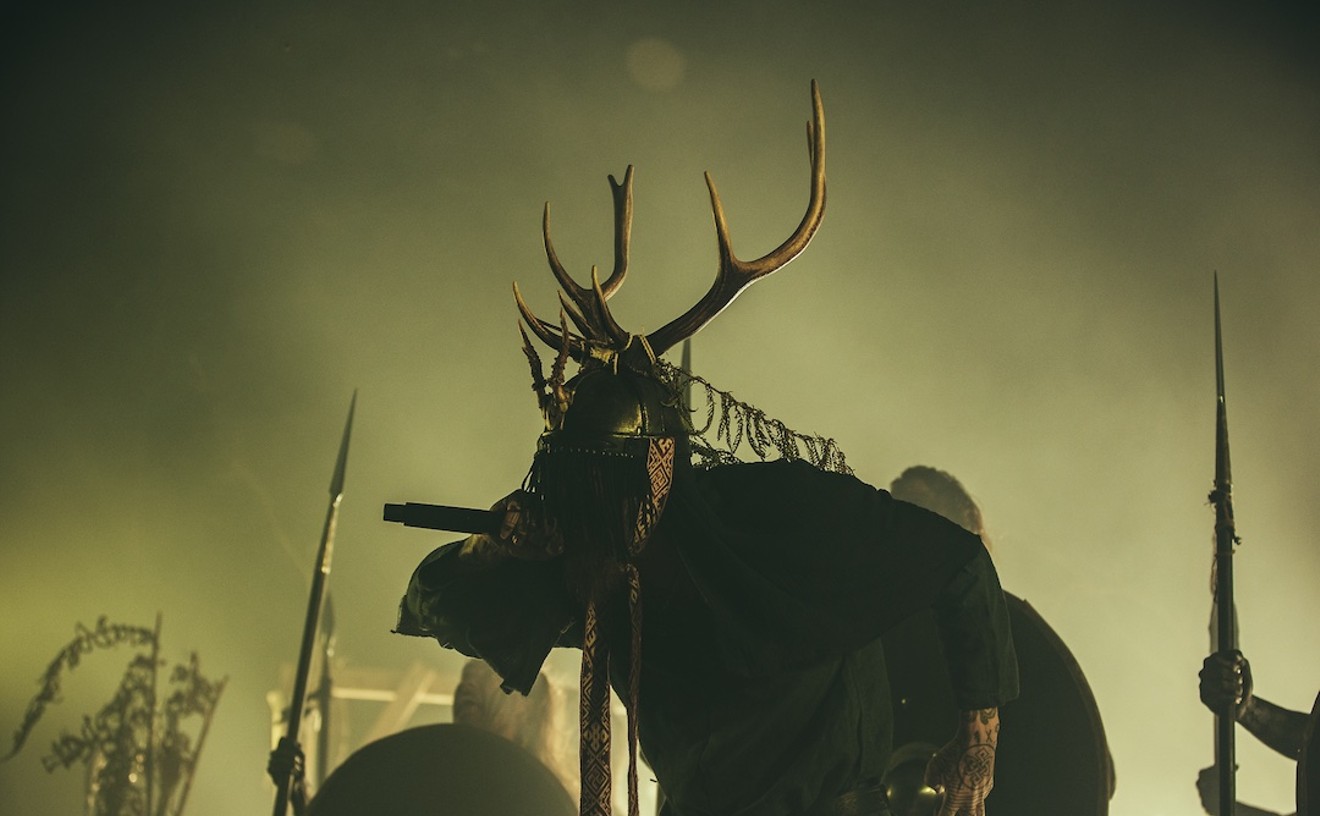Mathematician by day and rock-and-roll photographer by night John Koontz, 63, was at the Larimer Lounge catching the Hot Apostles, one of his favorite bands, the evening he died.
It was May 19, 2017, the night before the Project Pabst music festival would attract thousands to Larimer Square.
“We saw a couple of flashes and knew John was there,” recalls Hot Apostles frontwoman Eryn Swissdorf. “We played his favorite song of ours, ‘Crucify,’ and he looked over at my guitar player and gave him a thumbs-up.”
The two men smiled at each other. “Shortly after that, we knew something happened,” Swissdorf says.
Koontz walked to the front of the venue and asked the woman watching the door to call an ambulance for him. It arrived, picked him up, and before he reached the hospital, he’d died from a heart attack.
Not knowing what had happened to their fan and friend, the members of the Hot Apostles rushed to the hospital, where they learned he had passed away. He had no cell phone on him at the time, so they reached out to his loved ones and notified them.
Koontz left behind a grieving family and a wide circle of friends in the Colorado music community, many of whom remember him as a generous older gentleman who always came to their shows, offering kind and insightful words.
“He was ubiquitous,” says Whitney Rehr, a musician and songwriter in the bands Gata Negra, I’m a Boy and Sparkle Jetts. “He went to more shows than anyone I know, and I don’t know how he did it. You felt like your efforts were being recognized.”
As a photographer, Koontz was hardly a household name, even in the underground music world he documented. But the images and videos he shot inspired bands in Denver’s underground scene to do their best work. Despite his outsized influence, Koontz was soft-spoken and shy.
“Being behind the lens was his comfortable spot to view the world from, where he didn’t necessarily have to have huge conversations,” says Swissdorf. “People might leave him alone if he was on a mission, you know?”
Born on August 4, 1953, in Annapolis, Maryland, Koontz grew up in Glenbury, Maryland; Detroit, Michigan; and Littleton, Colorado. He and his siblings, Charlotte Minor and Carl Koontz, sang in the choir of a Lutheran church. John was known for his singing voice. His parents, both educators, raised him on a diet of classical music and encouraged him to take violin lessons and play in the elementary-school orchestra.
As a teenager and then a college student earning his computer-science degree from Colorado State University in Fort Collins, Koontz immersed himself in music, including that of the British Invasion, Howlin’ Wolf and Chuck Berry.
After college, in the 1980s, Koontz earned a master’s degree in linguistics from CU Boulder. He went on to pursue a Ph.D. and conducted fieldwork on Siouan dialects, but eventually withdrew from the program, opting not to complete his work because, as a perfectionist, he didn’t believe it was good enough. Despite his self-appraisal, he turned his efforts into a respected, scholarly Omaha/Ponca dictionary.
Soon Koontz took a job working as a mathematician for the National Institute of Standards and Technology in Boulder. He served in that position for forty years, dedicating himself during his free time to the Front Range music scene. He did more than just shoot photographs for bands, though, and sometimes those little things made all the difference.
“Any show where you have pre-sale tickets, which everybody fucking hates, he’d be the first one to buy tickets,” says Arlo White, singer for Sparkle Jetts and the Buckingham Squares. “He made you feel important, and that meant a lot to all of us. You’re not getting paid for many shows, and unless you know the people running the club, you don’t always get treated well. There’s not a lot of rewards for what we do, and nobody buys our CDs except for guys like John, and you revere them as family.”
He was also known for sharing his photos and videos with bands, helping them feed their social-media platforms and websites.
“Ninety percent of ours and probably a dozen other bands’ web content is from John Koontz,” says Jimmi Nasi of I’m a Boy and 40th Day. “He was at almost every show, snapping photos. It meant so much to us, not just because of the assets, but because he was kind and supportive. He was older, but you never imagined he would go away.”
Koontz was a true aficionado of surf music, says Minor. He regularly attended the Surf Guitar 101 Convention in California and the Instro Summit in North Carolina. Even in Colorado, he would scout out surf music when he could find it, and he was a devout fan of Denver’s Royal Aces, regularly attending their shows when they played live.
“I used to call him ‘the chronicler extraordinaire,’” says Royal Aces guitarist John Ragan. “We’re about the same age, and we had that connection, too. He would be self-deprecating and didn’t fancy himself a pro photographer, but nobody cared. He processed the photos in, I thought, an artistic way, with various programs.”
Since roughly 2008, if you regularly attended local underground rock shows, you would have encountered Koontz, shooting and quietly observing shows. The grittiness of a venue never deterred him. Nothing got in the way of him listening and chronicling the music he loved.
“It didn’t matter what night of the week you were playing,” White says. “Try getting your friends to come out on a Wednesday for a ten o’clock show.”
Even when musicians’ friends wouldn’t show up, Koontz was there. With his passing, the members of the bands he trained his lens on rallied on social media to express their sense of loss.
“I feel like we lost three-quarters of our crowd just with him,” says Nasi.
His sister recalls him showing up to concerts with his two daughters, Leah and Samantha, in tow. “When his daughters went to shows with him, they felt like they were around a celebrity,” Minor says. “I had no idea what kind of fan club he had among bands, and I think that is helping the family come to terms with his passing, knowing that all these people loved him.”
To remember Koontz, his family is asking people to make donations to Colorado Public Radio in his honor. Independent music promoter Claudia Woodman has organized memorial shows for July 16 and 17, where many of his favorite bands will play. At 10 a.m. on Sunday, July 16, Koontz’s loved ones will gather behind NIST to walk a trail to the Chamber of the Heart, where Koontz regularly exercised, a fitting send-off to a gentle spirit whose support and documentation of the music scene helped shape the rambunctious rock-and-roll world he adored.
John Koontz Tribute Shows, Saturday, July 15, and Sunday, July 16, Skylark Lounge, 140 South Broadway, 303-722-7844.
[
{
"name": "Air - MediumRectangle - Inline Content - Mobile Display Size",
"component": "12017618",
"insertPoint": "2",
"requiredCountToDisplay": "2"
},{
"name": "Editor Picks",
"component": "17242653",
"insertPoint": "4",
"requiredCountToDisplay": "1"
},{
"name": "Inline Links",
"component": "18838239",
"insertPoint": "8th",
"startingPoint": 8,
"requiredCountToDisplay": "7",
"maxInsertions": 25
},{
"name": "Air - MediumRectangle - Combo - Inline Content",
"component": "17261320",
"insertPoint": "8th",
"startingPoint": 8,
"requiredCountToDisplay": "7",
"maxInsertions": 25
},{
"name": "Inline Links",
"component": "18838239",
"insertPoint": "8th",
"startingPoint": 12,
"requiredCountToDisplay": "11",
"maxInsertions": 25
},{
"name": "Air - Leaderboard Tower - Combo - Inline Content",
"component": "17261321",
"insertPoint": "8th",
"startingPoint": 12,
"requiredCountToDisplay": "11",
"maxInsertions": 25
}
]












